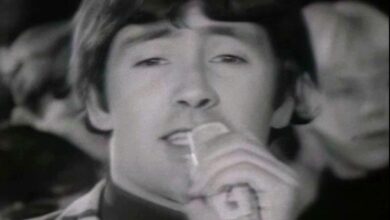The Searchers’ “Needles and Pins” Ignites the British Invasion and Redefines 1960s Pop Rock
When The Searchers released “Needles and Pins” in January 1964, they unknowingly set in motion one of the defining moments of the British Invasion. With its chiming guitars, melancholy lyrics, and haunting vocal delivery, the song resonated with audiences on both sides of the Atlantic. It became one of the band’s most enduring hits, reaching No. 1 on the UK Singles Chart and No. 13 on the Billboard Hot 100, securing their place in the growing wave of British acts that would soon dominate American airwaves. While The Beatles were leading the charge, The Searchers carved out their own legacy, blending folk-infused rock with a distinctive melodic sound that influenced generations of musicians.
The Searchers were among Liverpool’s most promising bands in the early 1960s, emerging from the city’s thriving Merseybeat scene. Originally formed in 1959 by John McNally and Mike Pender, the group gained recognition for their polished harmonies and jangly guitar sound, setting them apart from the rawer energy of some of their contemporaries. Their breakthrough came in 1963 with “Sweets for My Sweet,” which hit No. 1 in the UK, followed by “Sugar and Spice” later that year. However, it was “Needles and Pins” that would propel them beyond the British scene and into international recognition.
Unlike many of their early songs, “Needles and Pins” was not an original composition by The Searchers. It was penned by the legendary songwriting duo Jack Nitzsche and Sonny Bono—both of whom would go on to shape the sound of pop music in the 1960s. Originally recorded by Jackie DeShannon in 1963, her version received moderate attention but failed to reach the same heights as The Searchers’ rendition. The song’s lyrics tell a sorrowful tale of heartbreak, depicting the lasting sting of lost love, a theme that resonated deeply with young audiences experiencing the highs and lows of romance.
The recording of “Needles and Pins” showcased The Searchers’ refined approach to production. Lead guitarist Mike Pender delivered the song’s signature jangling guitar riff, which would later become a major influence on folk rock and power pop movements. Vocalist Tony Jackson provided a vulnerable yet sharp performance, his voice seemingly cracking under the emotional weight of the lyrics. The track also featured an innovative use of “jangly” 12-string guitar tones, predating the folk-rock boom that would later be popularized by The Byrds. The subtle tremolo effect on the guitars added to the ethereal, dreamlike quality of the song, distinguishing it from the heavier rock tracks dominating the era.
Upon its release, “Needles and Pins” received an overwhelmingly positive reception. It topped the UK Singles Chart for three weeks, becoming one of the defining British pop hits of the era. In the United States, the song broke into the Top 20 on the Billboard Hot 100, an impressive feat for a British band at the time. The song also performed well in Canada, Australia, and parts of Europe, solidifying The Searchers’ status as one of the leading British groups of the mid-1960s. Critics praised its evocative melody and emotive lyrics, recognizing it as a song that elevated pop songwriting beyond simple, formulaic love tunes.
Beyond its chart success, “Needles and Pins” played a crucial role in shaping the sound of the 1960s. The song’s blend of melancholic lyricism with a bright, melodic arrangement bridged the gap between rock and folk, laying the groundwork for a new wave of artists who would soon emerge. The Byrds, in particular, cited The Searchers as a key influence, incorporating their shimmering guitar work into the foundation of folk rock. Similarly, later power pop bands like Tom Petty and the Heartbreakers and Cheap Trick borrowed elements from the song’s production and melodic approach.
The song’s success also expanded The Searchers’ career trajectory. They became international stars, touring extensively across the United States and Europe. The British Invasion was in full swing, and The Searchers found themselves at the forefront of a movement that was reshaping the global music industry. Their ability to balance emotional storytelling with engaging, radio-friendly melodies allowed them to maintain their popularity in the rapidly changing musical landscape.
Over the years, “Needles and Pins” has been covered by numerous artists, each bringing their own interpretation to the song. In 1965, The Ramones recorded a punk-infused version that stripped the song down to its raw essentials, replacing its jangly melancholy with a more aggressive energy. Tom Petty and the Heartbreakers also performed the song live, paying tribute to its enduring influence. Even country artists found inspiration in its melody, with versions emerging from figures like Waylon Jennings.
At the time of the song’s release, The Searchers were experiencing both professional triumphs and internal tensions. While their music was thriving, disagreements over musical direction and industry pressures led to changes in their lineup. Tony Jackson left the band in 1964, replaced by Frank Allen, signaling a shift in the group’s dynamic. Despite these challenges, “Needles and Pins” remained a staple of their setlists and a defining moment in their career.
Decades after its initial release, the legacy of “Needles and Pins” remains intact. The song continues to be a staple on oldies stations and compilation albums, and it frequently appears in retrospectives about the British Invasion. Music historians often cite it as one of the first tracks to blend rock and folk elements seamlessly, setting the stage for the folk rock explosion of the mid-to-late 1960s. Its haunting melody and poignant lyrics ensure its place among the most beloved songs of its era.
Beyond its historical significance, the song’s influence can still be felt in contemporary music. The jangly guitar style pioneered by The Searchers helped shape the sound of alternative and indie rock, with bands like R.E.M. and The Smiths incorporating similar textures into their work. The emotional directness of the lyrics set a precedent for introspective songwriting in pop music, proving that even a simple love song could carry deep, lasting resonance.
Ultimately, “Needles and Pins” stands as a testament to The Searchers’ artistry and the transformative power of 1960s pop rock. It captured a moment in time when British bands were reshaping the industry, and its influence has rippled through generations of musicians. More than half a century later, the song remains a beloved classic, a shining example of how melody, emotion, and innovative production can create something truly timeless.



